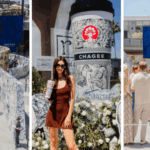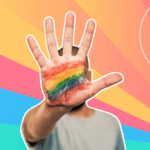By Yuri Endo, Creative Insights Manager, Getty Images
The Asia Pacific region is a diverse area that is home to more than half of the world’s population. By 2030, it is predicted to have twice the number of upper-income urban households as the United States, with more than 20 cities projected to have over 1 million such households. Asia accounts for 45% of the global GDP, presenting a $10 trillion consumption growth opportunity.1 With 60% of the world’s population,2 Asia is a key player in media and advertising. To keep up with fast-moving global cultural shifts, brands must choose visuals that authentically represent each culture.
Asian representation in pop culture is a complex issue that is often shaped by visual stereotypes. According to Getty Images VisualGPS research, people tend to see more diversity in movies and TV shows than in advertising. In fact, less than 10% of popular visuals downloaded from Getty Images accurately represent Asian people and their lived experiences.3 While this is a significant issue for the media and advertising industry, even in movies and TV shows, Asian characters are often relegated to smaller roles and subject to limiting clichés. According to USC Annenberg, over a quarter of AAPI characters in top 100 movies at the box office in 2019 were dead by the end of the movie.4 And in a recent episode of the TV series, Yellowjackets, a single Asian character was portrayed as geeky, targeted for ridicule, and killed off, further perpetuating these harmful tropes.
Representing Asian culture can also be problematic when it involves a mishmash of multiple cultures or when actors and visual traditions do not match the setting or story. Celebrated movies like Crazy Rich Asians faced criticism in the Asian market for biased portrayals of Singaporean culture and oversimplification of its people. Similarly, Raya and the Last Dragon and Moana presented an oversimplified version of their cultures, mixing multiple geographic and cultural influences into something that many locals couldn’t relate to.
Despite these challenges, some media have successfully depicted Asian characters as three-dimensional individuals from diverse backgrounds, presenting compelling tales that promote understanding and acceptance of others. For example, movies and TV shows like Everything Everywhere All at Once and Beef follow Asian characters dealing with their struggles and their joys, incorporating cultural nuances into their stories. International success stories such as Parasite, Squid Game, and Girl from Nowhere tell local stories that touch on relatable social inequalities and socioeconomic backgrounds. Finally, Return to Seoul is a thought-provoking film that explores the complexities of Asian diaspora and offers insights into Asian culture from both local and foreign perspectives.
When it comes to brands and media choosing or creating visuals, it’s not just about featuring the breadth of Asian ethnicities, but also about how we visualize them and reflect people’s true selves and lifestyles. It’s essential to ensure that imagery and videos are free of stereotypes and to be aware of how diverse and multidimensional Asian communities and their lifestyles are. Authentic visual storytelling not only helps brands connect with their audiences but also changes the way Asians are perceived.
Below are some best practices for brands on how to expand and deepen Asian narratives in visual storytelling:
Ensuring accurate depiction of cultural moments in every Asian community
The visual representation of Asian culture through popular visuals is limited, with only a few specific cultures being portrayed. These visuals primarily depict Chinese, Indian, Japanese, and Thai people as corporate or healthcare workers in multiethnic groups, with a lack of nuanced depictions of regional identities, traditions, food, cultural celebrations, mannerisms, and styling.5
However, cultural events and celebrations are central to the lives and identities of Asian people, making it essential to visualize these moments accurately in each community.
Authentic representation of Asian culture requires showing people in a variety of scenarios and roles. This includes outside of business settings, across all ages, displaying a person’s ethnicity alongside other intersections of identity, and exhibiting culturally specific activities that demonstrate how people celebrate and experience important cultural moments and holidays, such as Lunar New Year and New Year. By showcasing traditional food, clothing and customs, this can help consumers gain a deeper understanding and appreciation of each culture.
Recognizing age across different scenarios
Young Asian adults (20-29 years old) are the most represented group in popular visuals globally, accounting for over 40% of visuals. More than 70% of these young adults are shown working in a corporate environment, while older generations are less represented and are mostly shown in healthcare settings as patients or care receivers.
However, the population is changing. By 2025, GenZers and Millennials will make up half of the Asia Pacific consumers,6 with a diversification of professions outside of office work. Older generations are also more independent, with a wider range of active lifestyles. Between 2015 and 2050, the 60+ age group will more than double,7 and their buying power is expected to grow more than the rest of the population.
The accurate representation of age and identity is crucial to ensure a nuanced portrayal of younger generations of Asian communities and of aging. Older Asian people are often depicted leading a gentle lifestyle such as spending time with family, or in healthcare settings. While these depictions are valid, it’s equally important to portray them in leadership positions, fulfilled, happy, and focusing on pursuing other passions. Similarly, younger generations should be represented with a wider range of professions beyond the traditional office setting, such as gig economy workers, influencers, e-sport athletes, activists, and many others.
Exploring gender, sexual orientation, and gender identity in different situations
Asian women are slightly more represented than men in our most popular visuals, and they are three times more likely to be depicted in parental roles than men. However, both genders are often shown in business and teamwork concepts. There is also little diversity in gender expression, with almost all visuals featuring heterosexual men and women, with the LGBTQ+ community rarely represented.8
Despite this, over 70% of people in the Asia Pacific believe that individuals should be free to choose the gender they identify with and express their gender through clothing, hairstyles, and mannerisms.9
This should be an indication for brands that it is crucial to consider images and videos that challenge gender stereotypes, ensure that roles are equally attributed to all genders, including the LGBTQ+ community and gender nonconforming individuals, and be conscious of stereotypes related to each identity. However, legal limitations still exist in some Asian countries, so it is important to consider this aspect.
Embracing a diverse view of beauty
Less than 1% of our popular visuals depict body positivity, with little representation of larger bodies. Globally, there is a preference for Eurocentric beauty standards that feature lighter skin complexions, slimmer bodies, and taller physiques when depicting Asian people, with women often portrayed dieting or working out when larger bodies are shown.10 In Asia Pacific, VisualGPS research also shows that biases are centered around body shape, size, and skin color, with darker-skinned Asians often portrayed as working-class.11
To promote a more inclusive representation of beauty, it is crucial to showcase a variety of body types, facial features, hair, and skin tones for everyone in everyday activities, work, and educational settings, highlighting physical and mental health and happiness.
As brands prioritize diversity and inclusion, they need to ensure intent and education converts to action. With resources available like the DE&I Imagery Toolkits created by Getty Images and Citi, brands can help create authentic and multi-faceted depictions of people, as well as help accelerate inclusivity in their global marketing and advertising more broadly.
Sources:
[1] Meet your future Asian consumer (McKinsey & Company) [2] Distribution of the global population 2022, by continent (Statista) [3] Getty Images VisualGPS[4] Asians & Pacific Islanders Across 1,300 Popular Films (USC Annenberg)
[5] Getty Images VisualGPS [6] Getty Images VisualGPS [7] What makes Asia−Pacific’s Generation Z different? (McKinsey & Company) [8] Ageing and Health – Key Facts (World Health Organization) [9] Getty Images VisualGPS [10] Getty Images VisualGPS [11] Getty Images VisualGPS






